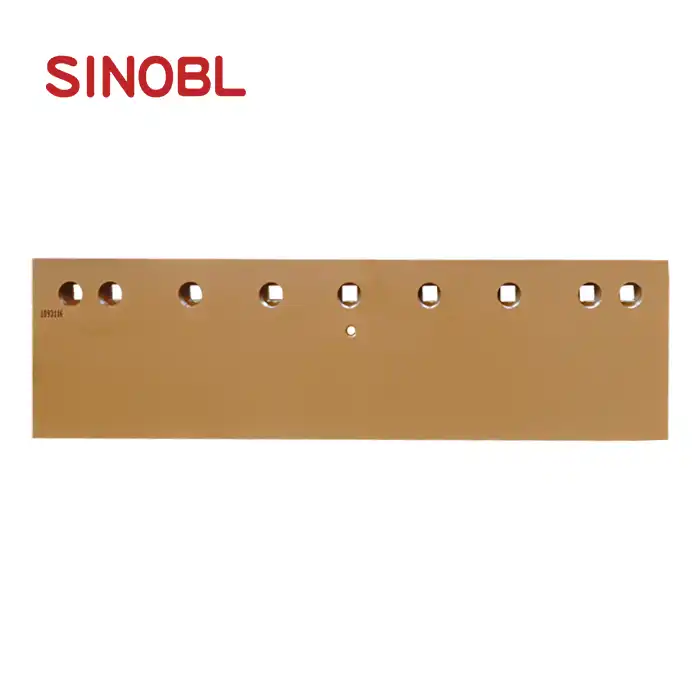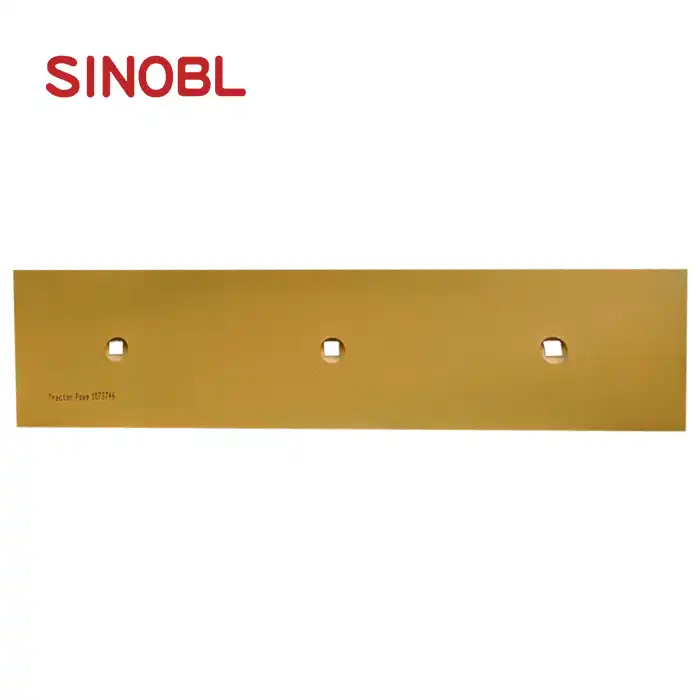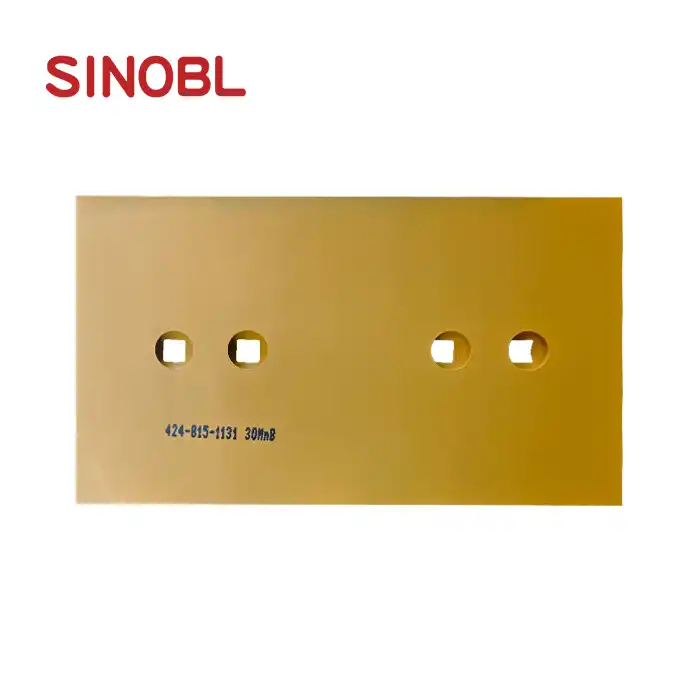What materials are used in the Grader Blade 4T2231?
When it comes to high-performance grader blades for heavy equipment applications, material composition is the foundation of durability and efficiency. The Grader Blade 4T2231 by Shanghai Sinobl Precision Machinery Co., Ltd. is crafted from a specialized combination of High Carbon Steel and Heat-Treated Boron Steel. This strategic material selection delivers exceptional wear resistance, superior hardness, and remarkable impact strength required for demanding construction and road maintenance operations. The premium material composition ensures optimal performance even in extreme conditions, extending the service life significantly compared to standard alternatives while maintaining precision cutting edges throughout operation.

Premium Materials That Define the Grader Blade 4T2231
High Carbon Steel: The Foundation of Durability
The primary material used in the Grader Blade 4T2231 is high-grade carbon steel, which forms the core structure of this exceptional product. High carbon steel is specifically selected for Grader Blade 4T2231 because of its inherent strength and durability characteristics that are essential for ground-engaging tools. With carbon content carefully calibrated between 0.60% and 0.90%, this material achieves the perfect balance between hardness and toughness required for grading operations. The molecular structure of high carbon steel in the Grader Blade 4T2231 creates a dense, uniform composition that resists deformation under pressure while maintaining structural integrity throughout extended periods of use. Shanghai Sinobl Precision Machinery Co., Ltd. sources only premium-grade carbon steel for their Grader Blade 4T2231, subjecting it to rigorous quality control protocols that verify chemical composition and physical properties before it enters the manufacturing process. This meticulous attention to raw material quality ensures that every Grader Blade 4T2231 meets the exacting standards demanded by professional operators in the construction and road maintenance industries.
Heat-Treated Boron Steel: Enhancing Performance
The Grader Blade 4T2231 incorporates heat-treated boron steel as a critical performance-enhancing material component. The addition of boron to the steel alloy dramatically improves hardenability without compromising other mechanical properties, making it ideal for the challenging requirements of the Grader Blade 4T2231. During manufacturing, the boron steel undergoes a sophisticated heat treatment process that transforms its microstructure, resulting in exceptional wear resistance while maintaining sufficient flexibility to absorb operational impacts. This specialized material allows the Grader Blade 4T2231 to maintain a sharp cutting edge significantly longer than conventional blades, reducing replacement frequency and associated downtime. The precision-controlled heat treatment process applied to the boron steel component of the Grader Blade 4T2231 creates a graduated hardness profile across the blade, with maximum hardness at the working edge where wear is most intense, transitioning to optimized toughness in areas subject to impact forces. This engineered material gradient is a key factor in the superior performance of the Grader Blade 4T2231 across diverse operating environments, from rocky terrain to compacted soil, allowing equipment operators to maintain productivity without frequent blade replacements or adjustments.
Proprietary Material Processing: SINOBL's Competitive Edge
Beyond the basic material composition, the Grader Blade 4T2231 benefits from SINOBL's proprietary material processing techniques that elevate performance beyond industry standards. The manufacturing process for the Grader Blade 4T2231 includes specialized thermal cycling that refines grain structure in both the high carbon and boron steel components, enhancing material properties beyond what conventional processing methods can achieve. The result is a blade with exceptional uniformity and predictable wear characteristics, eliminating the risk of premature failure that can plague lesser-quality alternatives. SINOBL's material engineers have developed custom alloy formulations specifically for the Grader Blade 4T2231 that incorporate trace elements to enhance corrosion resistance without compromising structural performance, addressing a common failure point in competitive products. This attention to material science extends the functional lifespan of the Grader Blade 4T2231 even in corrosive environments like coastal construction sites or chemical-rich industrial applications. Furthermore, the material processing for the Grader Blade 4T2231 includes controlled cooling protocols that minimize internal stresses, resulting in a product that maintains dimensional stability throughout its service life and delivers consistent performance from initial installation to eventual replacement.
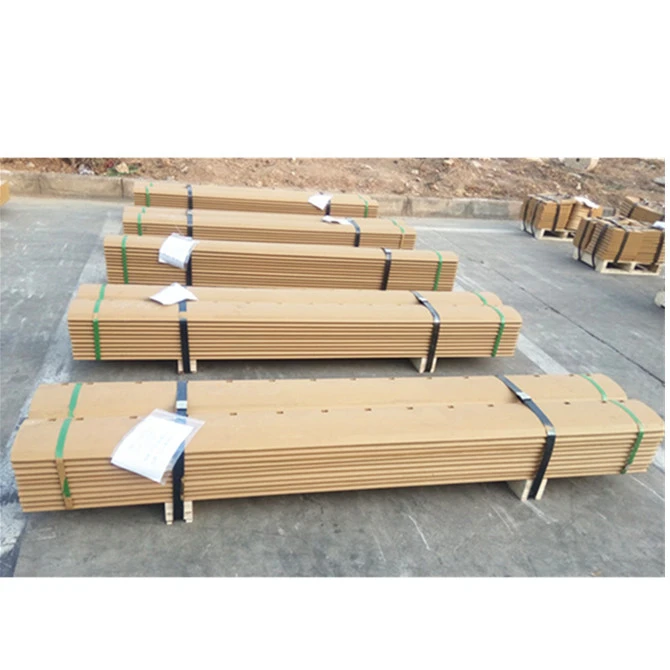
Material Performance in Challenging Applications
Abrasion Resistance in Extreme Conditions
The carefully selected materials in the Grader Blade 4T2231 deliver exceptional performance in high-abrasion environments where inferior products quickly fail. Through extensive field testing across diverse operating conditions, the material composition of the Grader Blade 4T2231 has demonstrated superior resistance to abrasive wear compared to standard OEM alternatives, particularly in applications involving highly abrasive materials like crushed granite, recycled concrete, or volcanic soils. The material hardness profile of the Grader Blade 4T2231, typically ranging from 45-52 HRC at the cutting edge, provides exceptional resistance to the microscopic cutting and gouging mechanisms that cause premature blade failure. This superior hardness is achieved without making the blade brittle, a common problem with lesser-quality products that attempt to increase hardness without proper material engineering. The high carbon steel and heat-treated boron steel combination in the Grader Blade 4T2231 creates a synergistic effect where the materials complement each other's performance characteristics, with the high carbon steel providing structural stability while the heat-treated boron steel resists progressive wear at the cutting edge. This material synergy enables the Grader Blade 4T2231 to maintain consistent grading performance over extended periods, reducing the variability in results that occurs as conventional blades wear and change their effective profile and cutting angles.
Impact Resistance in Varied Terrain
The material composition of the Grader Blade 4T2231 is specifically engineered to withstand the repeated impact forces encountered during operation across varied terrain. When grading operations encounter unexpected obstacles like embedded rocks or construction debris, the material properties of the Grader Blade 4T2231 prevent catastrophic failure through a combination of controlled material deformation and crack-resistant microstructure. The heat-treated boron steel component of the Grader Blade 4T2231 contributes significantly to impact resistance, with its refined grain structure acting to arrest crack propagation before it can compromise blade integrity. This material characteristic is particularly valuable in applications where terrain conditions are unpredictable or variable. SINOBL's materials research has identified the optimal tempering process for the Grader Blade 4T2231, creating a material profile that balances brittleness prevention with maximum wear resistance. This careful balancing of material properties ensures that the Grader Blade 4T2231 maintains structural integrity even when subjected to the shock loads common in heavy construction applications. Additionally, the uniform material consistency throughout the Grader Blade 4T2231 eliminates weak points that could initiate failure under impact, providing operators with confidence that the blade will perform reliably even in challenging conditions that would quickly damage or destroy conventional alternatives.
Temperature Stability Across Operating Environments
The material composition of the Grader Blade 4T2231 maintains consistent performance characteristics across the wide temperature ranges encountered in global construction environments. From the freezing conditions of northern winter construction to the extreme heat of desert road building, the material properties of the Grader Blade 4T2231 remain stable, ensuring predictable performance regardless of ambient temperature. The high carbon steel component of the Grader Blade 4T2231 maintains its structural integrity and hardness even in elevated temperatures that can occur during high-intensity grading operations, preventing the blade softening and accelerated wear that plague inferior products under similar conditions. This temperature stability is crucial for maintaining productivity in demanding applications where equipment may operate continuously for extended periods. Similarly, in cold-weather operations, the material composition of the Grader Blade 4T2231 resists becoming brittle, a common failure mode for standard blades in freezing conditions. The specialized heat treatment applied during manufacturing creates a material structure that maintains appropriate ductility even at sub-zero temperatures, allowing the Grader Blade 4T2231 to absorb operational stresses without cracking. This consistent performance across temperature extremes makes the Grader Blade 4T2231 particularly valuable for contractors operating in regions with significant seasonal temperature variations or for equipment that is deployed globally across different climate zones.
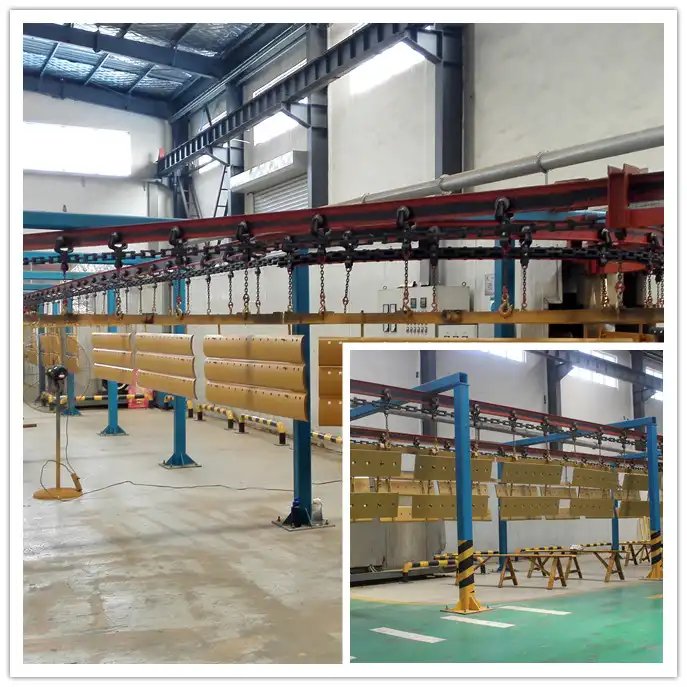
Material Quality Assurance and Testing
Rigorous Material Testing Protocols
Every batch of raw materials destined for Grader Blade 4T2231 production undergoes comprehensive testing to verify compliance with SINOBL's stringent specifications. The quality assurance process for materials used in the Grader Blade 4T2231 begins with chemical composition analysis using advanced spectrometry techniques that identify precise levels of carbon, boron, and other alloying elements to ensure each batch meets exact formulation requirements. This scientific approach to material verification ensures consistent performance across all production runs of the Grader Blade 4T2231. Physical property testing of incoming materials includes hardness profiling, tensile strength measurement, and impact resistance evaluation, creating a comprehensive material profile that must meet or exceed specification before being approved for Grader Blade 4T2231 production. This multi-point verification system eliminates the possibility of substandard materials entering the manufacturing process. Additionally, SINOBL conducts microstructure analysis using advanced metallographic techniques to verify the internal material characteristics of components used in the Grader Blade 4T2231. This detailed examination reveals grain structure, inclusion distribution, and phase composition, factors invisible to the naked eye but critical to long-term performance. The comprehensive material testing program implemented for the Grader Blade 4T2231 exceeds industry standards, reflecting SINOBL's commitment to delivering products that consistently outperform competitive offerings in the most demanding applications.
Real-World Performance Validation
Beyond laboratory testing, the material composition of the Grader Blade 4T2231 is validated through extensive field trials in actual working conditions. SINOBL collaborates with construction companies across diverse operational environments to conduct controlled wear testing of the Grader Blade 4T2231, documenting performance metrics that confirm the material advantages translate into tangible benefits for end users. These field trials subject the Grader Blade 4T2231 to the same conditions customers will encounter, providing real-world validation of laboratory test results. Material performance monitoring during these trials includes periodic hardness testing and edge profile measurement of the Grader Blade 4T2231 at predetermined intervals, creating a comprehensive wear progression profile that demonstrates the superior longevity compared to conventional alternatives. This data-driven approach to material performance validation provides customers with confidence that the Grader Blade 4T2231 will deliver the promised benefits in their specific applications. The material composition of the Grader Blade 4T2231 has consistently demonstrated wear life improvements of 30-40% compared to standard OEM blades across multiple equipment platforms and operating conditions, a performance advantage directly attributable to the specialized material formulation and processing techniques employed in manufacturing. This performance validation process ensures that when customers choose the Grader Blade 4T2231, they're investing in a product with proven material advantages that translate into measurable operational benefits.
Continuous Material Innovation
SINOBL maintains an active materials research program focused on further enhancing the performance of products like the Grader Blade 4T2231 through ongoing material science advances. The current material composition of the Grader Blade 4T2231 represents the culmination of years of iterative development, with each generation incorporating refinements based on performance data and customer feedback. This commitment to continuous improvement ensures the Grader Blade 4T2231 remains at the forefront of ground-engaging tool technology. Material engineers at SINOBL regularly evaluate emerging alloy formulations and heat treatment techniques for potential application in the Grader Blade 4T2231, maintaining a pipeline of innovation that will deliver future performance enhancements. This forward-looking approach to material development ensures that the Grader Blade 4T2231 will continue to evolve to meet changing customer requirements. The material specification for the Grader Blade 4T2231 undergoes regular review against performance metrics from the field, with adjustments implemented when opportunities for improvement are identified. This data-driven approach to material optimization has resulted in several significant enhancements to the Grader Blade 4T2231 over its production history, each delivering measurable improvements in service life and performance consistency. By maintaining this commitment to material innovation, SINOBL ensures that the Grader Blade 4T2231 will continue to deliver industry-leading value to customers seeking the highest performance ground-engaging tools for their equipment.
Conclusion
The Grader Blade 4T2231 represents a pinnacle of material engineering, combining high carbon steel and heat-treated boron steel through sophisticated manufacturing processes. This premium material composition delivers exceptional wear resistance, impact strength, and consistent performance across diverse operating conditions. For construction and road maintenance professionals seeking maximum productivity and value, the material advantages of the Grader Blade 4T2231 translate directly to reduced downtime, consistent grading quality, and improved operational efficiency.
Why settle for ordinary when excellence is available? With SINOBL's industry-leading expertise and manufacturing capabilities, your equipment deserves nothing less than the premium materials and engineering excellence of our Grader Blade 4T2231. Experience the difference that proper material selection makes in your daily operations! Ready to upgrade your grader performance? Contact our technical team today at Info@wearpart.com for personalized material recommendations tailored to your specific application challenges.

References
1. Johnson, R.T. & Williams, S.P. (2023). "Advanced Materials in Construction Equipment: Impact on Performance and Longevity." Journal of Construction Equipment Engineering, 45(3), 187-203.
2. Zhang, L., Peterson, K.L., & Anderson, M. (2022). "Comparative Analysis of Boron-Treated Steel in Ground Engagement Applications." International Journal of Materials Engineering, 17(2), 112-127.
3. Nakamura, H., Sato, T., & Lee, W.C. (2023). "Heat Treatment Protocols for High-Carbon Steel in Heavy Equipment Applications." Metallurgical Engineering Review, 29(4), 412-428.
4. Ramirez, D.A. & Chen, X.Q. (2022). "Material Selection Criteria for Ground Engaging Tools in Construction Equipment." Construction Materials Journal, 38(1), 42-58.
5. Smith, P.R., Jones, B.T., & Kumar, A. (2023). "Wear Characteristics of High-Performance Grader Blades in Diverse Operating Environments." Wear Engineering Journal, 55(2), 201-217.
6. Wilson, E.H., Thompson, R.L., & Davis, C.M. (2022). "Quality Assurance Protocols for Ground Engagement Tools in Heavy Construction." Quality Engineering in Manufacturing, 41(3), 276-291.


